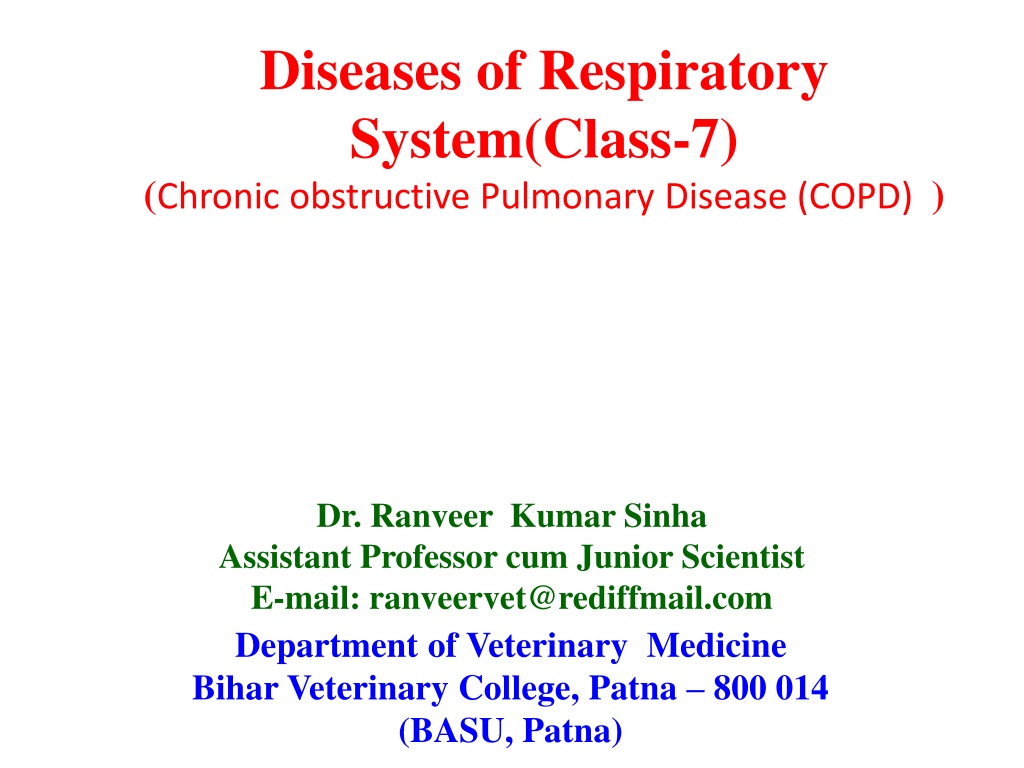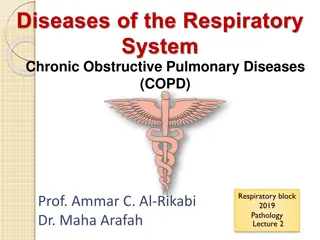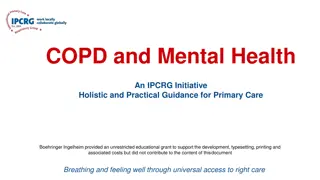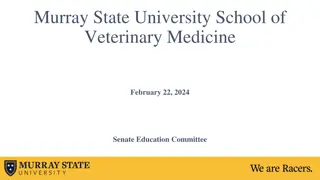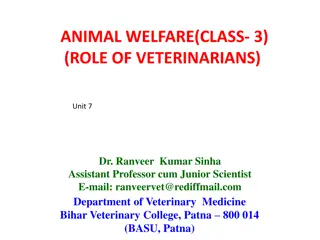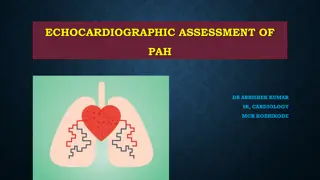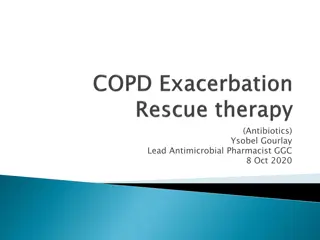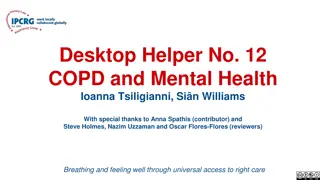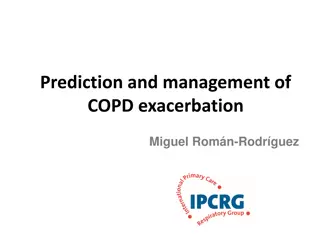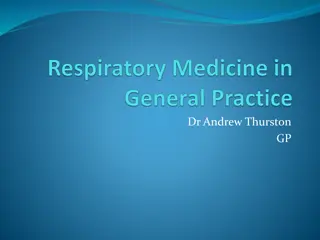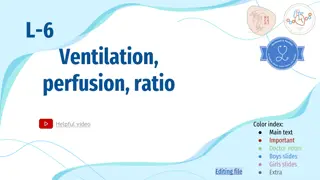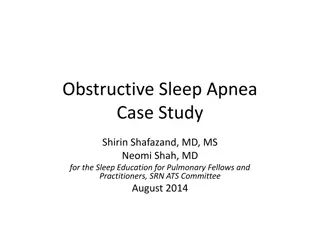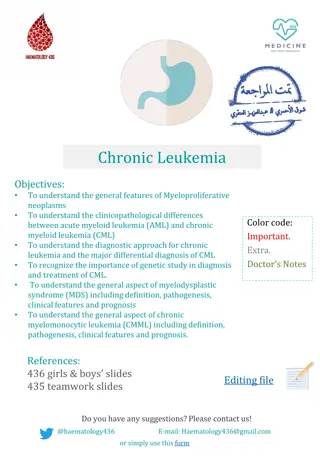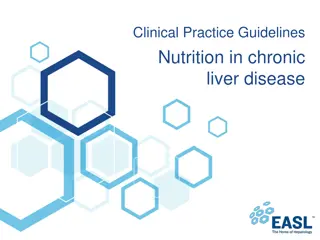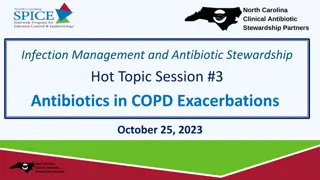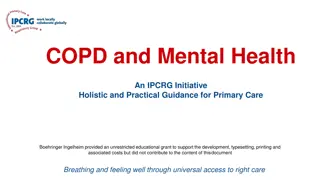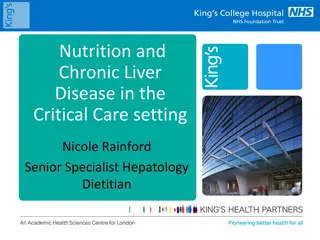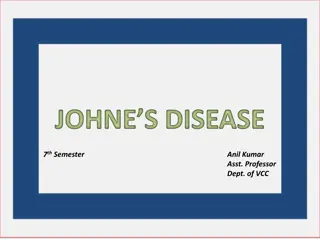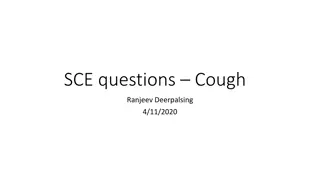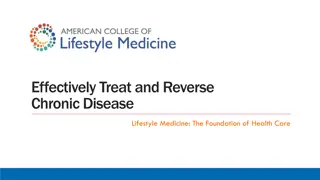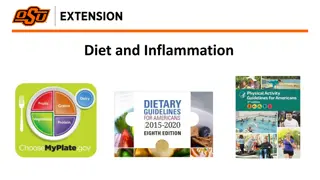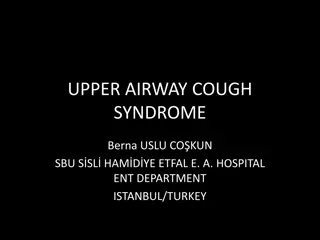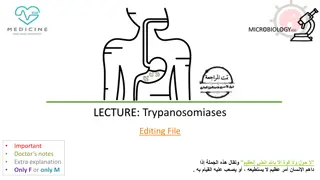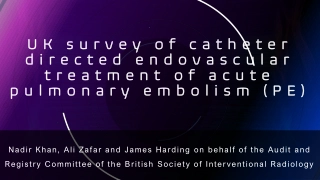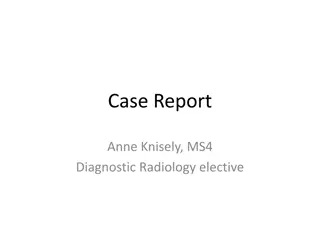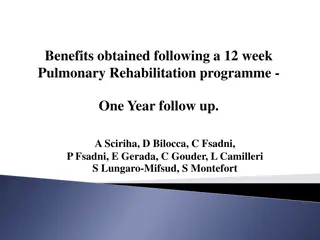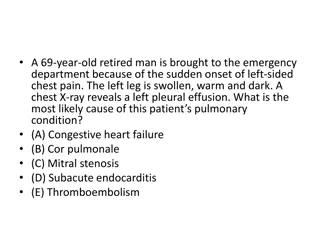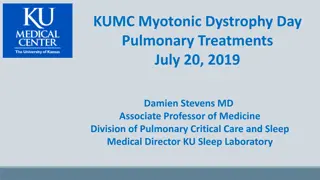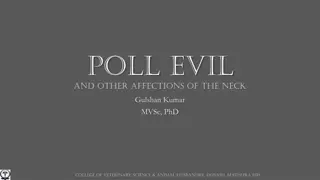Chronic Obstructive Pulmonary Disease (COPD) in Horses: A Veterinarian's Perspective
Chronic Obstructive Pulmonary Disease (COPD) in horses is a respiratory condition caused by hypersensitivity reactions to allergens, viral infections, or bronchopneumonia. This chronic respiratory disease leads to decreased work performance, chronic coughing, abnormal lung sounds, and cardiac dysfunction. The pathogenesis involves airway inflammation, mucus production, and bronchoconstriction, resulting in difficulty breathing and impaired gas exchange. Diagnosis and management by veterinarians like Dr. Ranveer Kumar Sinha are essential for improving the quality of life for affected horses.
Download Presentation

Please find below an Image/Link to download the presentation.
The content on the website is provided AS IS for your information and personal use only. It may not be sold, licensed, or shared on other websites without obtaining consent from the author. Download presentation by click this link. If you encounter any issues during the download, it is possible that the publisher has removed the file from their server.
E N D
Presentation Transcript
Diseases of Respiratory System(Class-7) (Chronic obstructive Pulmonary Disease (COPD) ) Dr. Ranveer Kumar Sinha Assistant Professor cum Junior Scientist E-mail: ranveervet@rediffmail.com Department of Veterinary Medicine Bihar Veterinary College, Patna 800 014 (BASU, Patna)
Chronic obstructive Pulmonary Disease (COPD) Syn.:- Heaves poor man disease chronic alveolar emphysema pulmonary emphysema Broken wind Pulmonary emphysema is the distension of the lungs caused by over-distension of alveoli of lungs with rupture of alveolar walls with or without escape of air into the interstitial space It is chronic respiratory disease of horses characterized clinically by decrease work performance, chronic coughing, abnormal lung sounds and cardiac dysfunction
Etiology 1- Hypersensitivity reaction to "allergens found in barn dust and moldy and dusty feeds such as, Aspergillus fumigatus and Micropolyspora. 2- As a sequelle to viral infection of the upper respiratory tract of the horse. 3- Secondary to bronchopneumonia
Pathogenesis COPD is a delayed hypersensitivity reaction to inhaled allergens (materials that provoke allergic reactions) Inhaled irritants stimulate the parasympathetic nervous system to release acetylcholine (ACh). .. Bind to resp. receptors bronchoconstriction (bronchospasm) The mucosa is thickened by inflammation, narrow the airways make breathing more difficult
Pathogenesis Air flow is decreased by the increased production of mucus. Accumulated mucus and cellular debris in the airways narrow air passage. This increased work of breathing is evidenced by the abdominal push ("heaving") -- COPD-affected horses try to force air out through the narrowed airways during exhalation. heaves line (furrow or trough) Obstruction of air passages of COPD- affected horses - oxygen cannot be efficiently delivered to the alveoli. Impairment of gas exchange in the lungs - exercise intolerance. Coughing because inflammation stimulates the cough reflex Excessive mucous and bronchoconstriction retard expiration of air out of alveoli - emphysema.
Clinical findings On clinical examination, the horse is usually bright and alert, the temperature is normal and appetite is usually normal 1- Coughing (single or paroxysm) which becomes more pronounced and wheezing with exercise. 2- Intermittent, bilateral nasal discharge which may be serous, mucoid, mucopurelent or blood stained. 3- The respiratory rate is increased from a normal of 12/min. up to 24-36/min. Heaves line 4- During expiration there is a clearly visible contraction of the abdominal muscles of flank. 5-In long standing cases this result in the so-called Heave line which is a trough follows along the costal arch (Barrel chest)
Clinical findings 6- Auscultation of the lungs reveals wheezing and crakling sounds occur at the end of inspiration and the end of expiration (placement of plastic bag over the horse's nostrils for 1 minute will cause the horse to hyperventilate and abnormal sounds are more pronounced) Pleuritic friction rub may be auscultated over the chest 7- Percussion of the thorax hyper-resonant sound and also revealed an increase in the area of resonance by as much as 1 2 intercostal spaces caudally. 8- increasing in heart rate up to 50- 60/min in advanced cases of COPD due to pulmonary arterial hypertension.
Diagnosis ( I) History (II) Clinical findings Lab. Diagnosis Blood gas analysis in COPD reveal PaO2 below normal and PaCO2 is increased. Cytological examination of tracheobronchial aspirates with COPO reveal excessive mucus and neutrophils. Endoscopic examination of upper respiratory tract (mucus and inflammation). Radiographic examination of thorax
Treatment and Control There is no specific cure, treatment is palliative. 1- The provision of fresh air, as the horse should be kept permanently in the open air. 2- Avoid exposure of the horse to dust, therefore wood chippings or saw dust should be used for bedding instead of straw. 3- Corticosteroids, such as dexamethazone 25mg/ animal IM every 2nd day for up to 2 weeks may give remarkable results because of their antinflammatory effect
Treatment and Control 4- Bronchodilators a-isoprenaline inhalation is a sympathomimetic drug which stimulate beta-1 (cardiac) and beta2 (smooth muscle) receptors causing cardiac stimulation and bronchial muscle relaxation (temporary relief for 1-2 hrs.) b- Turbutaline inhalation is a sympathomimetic drug which exhibits action selectively in smooth muscle receptors (beta-2) causing bronchodilation with no cardiac stimulation for 1-2 hours. c- Clenbuterol HCL(long acting bronchodilator) beta-2 sympathomimetic has no untoward effect on circulatory system of exercising horses. 5- Antibiotics
